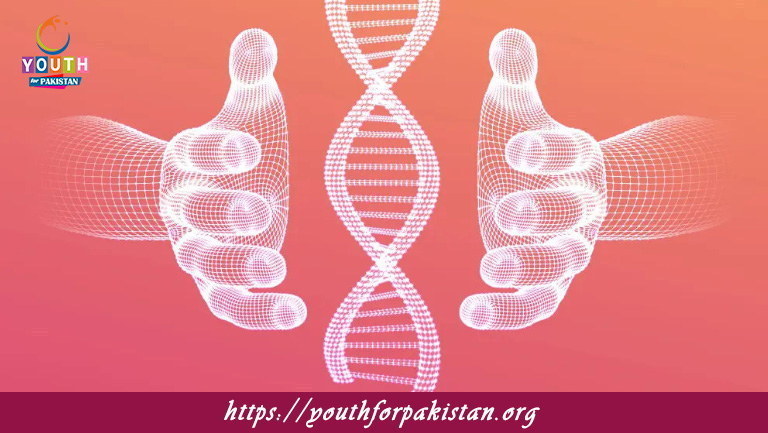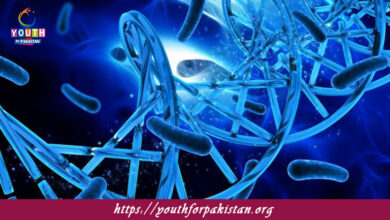Variation & Genetics/Inheritance MDCAT MCQs with Answers

Welcome to the Variation & Genetics/Inheritance MDCAT MCQs with Answers. In this post, we have shared Variation & Genetics/Inheritance Multiple Choice Questions and Answers for PMC MDCAT 2024. Each question in MDCAT Biology offers a chance to enhance your knowledge regarding Variation & Genetics/Inheritance MCQs in this MDCAT Online Test.
Which of the following refers to genetic variation?
a) Identical genetic material in all individuals
b) Differences in genetic makeup between individuals
c) Absence of genetic mutations
d) Similar phenotypes across generations
The concept of genetic variation is most accurately described as:
a) The uniformity of genes within a species
b) Random mutations that lead to diversity
c) Identical genes passed down through generations
d) Environmental factors causing changes in genes
Which of the following mechanisms contributes to genetic variation during sexual reproduction?
a) Binary fission
b) Independent assortment
c) Cloning
d) Mitotic division
A population’s genetic variation is essential for:
a) Maintaining uniformity in traits
b) Enhancing the adaptability of the population
c) Preventing genetic mutations
d) Increasing the number of offspring
Which process ensures the mixing of genetic material from two parents?
a) Mutation
b) Meiosis
c) Mitosis
d) Binary fission
The principle of independent assortment is based on:
a) The alignment of homologous chromosomes during metaphase I
b) The separation of sister chromatids during anaphase
c) The random fertilization of gametes
d) The mutation of DNA sequences
Which type of mutation involves a change in a single nucleotide?
a) Frame shift mutation
b) Silent mutation
c) Point mutation
d) Chromosomal mutation
In a dihybrid cross, the phenotypic ratio of the F2 generation is:
a) 1:2:1
b) 3:1
c) 9:3:3:1
d) 1:1
Which type of genetic variation is caused by crossing over during meiosis?
a) Genetic drift
b) Mutation
c) Recombination
d) Migration
The Hardy-Weinberg principle assumes which of the following for a population?
a) Genetic drift is occurring
b) There is random mating
c) Mutations are frequent
d) There is a significant gene flow
The presence of different alleles at a gene locus in a population is known as:
a) Genetic drift
b) Genetic polymorphism
c) Gene flow
d) Inbreeding
The genetic makeup of an organism is referred to as its:
a) Phenotype
b) Genotype
c) Allele
d) Karyotype
Which of the following is an example of a mutation that does not alter the protein sequence?
a) Nonsense mutation
b) Missense mutation
c) Silent mutation
d) Frame shift mutation
Which of the following is a result of genetic recombination?
a) Identical alleles in offspring
b) New combinations of alleles in offspring
c) Reduction in genetic variation
d) Loss of genetic material
In a monohybrid cross, the expected genotypic ratio of the F2 generation is:
a) 1:2:1
b) 3:1
c) 9:3:3:1
d) 1:1
Which of the following terms describes the physical expression of a gene?
a) Genotype
b) Allele
c) Phenotype
d) Karyotype
The principle of segregation states that:
a) Each gamete receives both alleles for a gene
b) Each gamete receives only one allele for a gene
c) Alleles for different genes segregate independently
d) Gene expression is uniform across all cells
Which of the following processes increases genetic diversity within a population?
a) Genetic drift
b) Gene flow
c) Inbreeding
d) Genetic bottleneck
In a test cross, an organism with a dominant phenotype is crossed with an organism that is:
a) Homozygous dominant
b) Homozygous recessive
c) Heterozygous
d) Completely unrelated
Which type of inheritance pattern is characterized by a blend of traits from both parents?
a) Codominance
b) Incomplete dominance
c) Complete dominance
d) Epistasis
Which type of genetic variation involves the duplication or loss of entire chromosomes?
a) Point mutation
b) Frame shift mutation
c) Chromosomal mutation
d) Silent mutation
In which type of inheritance do both alleles contribute to the phenotype?
a) Incomplete dominance
b) Complete dominance
c) Codominance
d) Epistasis
Genetic variation can be introduced into a population through:
a) Cloning
b) Asexual reproduction
c) Sexual reproduction
d) Artificial selection
Which of the following is an example of a gene pool?
a) The total number of genes in a population
b) The total number of individuals in a population
c) The number of alleles in a single organism
d) The number of mutations in a population
Which type of cross involves tracking two traits at the same time?
a) Monohybrid cross
b) Dihybrid cross
c) Test cross
d) Back cross
The principle of independent assortment applies to genes located on:
a) The same chromosome
b) Different chromosomes
c) The mitochondria
d) The sex chromosomes
Genetic drift is most pronounced in:
a) Large populations
b) Small populations
c) Populations with high gene flow
d) Populations with high mutation rates
The Hardy-Weinberg equilibrium is disrupted by:
a) Random mating
b) No mutations
c) Natural selection
d) Large population size
Which of the following refers to a change in the number of chromosomes in a cell?
a) Aneuploidy
b) Polyploidy
c) Mutagenesis
d) Epigenetics
Which of the following is a type of genetic mutation that results in the addition or deletion of nucleotides?
a) Point mutation
b) Silent mutation
c) Frame shift mutation
d) Missense mutation
Which type of genetic variation occurs when segments of DNA are exchanged between chromosomes?
a) Translocation
b) Duplication
c) Inversion
d) Deletion
Which of the following mechanisms is responsible for genetic recombination during meiosis?
a) Crossing over
b) Independent assortment
c) Random fertilization
d) All of the above
Which term describes the likelihood of a gene variant being passed to the next generation?
a) Gene frequency
b) Genetic drift
c) Selection coefficient
d) Gene flow
Which of the following is NOT a source of genetic variation?
a) Mutation
b) Genetic recombination
c) Environmental adaptation
d) Gene flow
The phenomenon where two different alleles are both fully expressed in a heterozygote is known as:
a) Codominance
b) Incomplete dominance
c) Epistasis
d) Penetrance
In a population where the allele frequencies remain constant, which of the following is true?
a) The population is evolving
b) The population is in Hardy-Weinberg equilibrium
c) The population is experiencing genetic drift
d) The population has low genetic variation
Which term refers to the exchange of genetic material between homologous chromosomes?
a) Crossing over
b) Genetic drift
c) Gene flow
d) Mutation
Which of the following can increase genetic diversity in a population?
a) Bottleneck effect
b) Founder effect
c) Gene flow
d) Inbreeding
Which term describes the process by which new genetic variants arise?
a) Genetic drift
b) Gene flow
c) Mutation
d) Selection
The term “phenotypic plasticity” refers to:
a) Changes in genotype due to environmental factors
b) Variation in phenotype due to genetic factors
c) The ability of an organism to change its phenotype in response to environmental conditions
d) The fixed expression of genetic traits
In a cross between two heterozygous individuals for a single trait, what is the phenotypic ratio in the F2 generation?
a) 1:2:1
b) 3:1
c) 9:3:3:1
d) 1:1
Which of the following does NOT affect allele frequencies in a population?
a) Mutation
b) Migration
c) Random mating
d) Natural selection
The total collection of genes and their variants in a population is known as the:
a) Gene pool
b) Gene frequency
c) Genetic drift
d) Genotype ratio
Which of the following best describes the concept of genetic equilibrium?
a) Genetic variation within a population remains constant
b) The gene pool is constantly changing
c) Allele frequencies fluctuate rapidly
d) Genetic drift causes significant changes
If you are interested to enhance your knowledge regarding Physics, Chemistry, Computer, and Biology please click on the link of each category, you will be redirected to dedicated website for each category.





